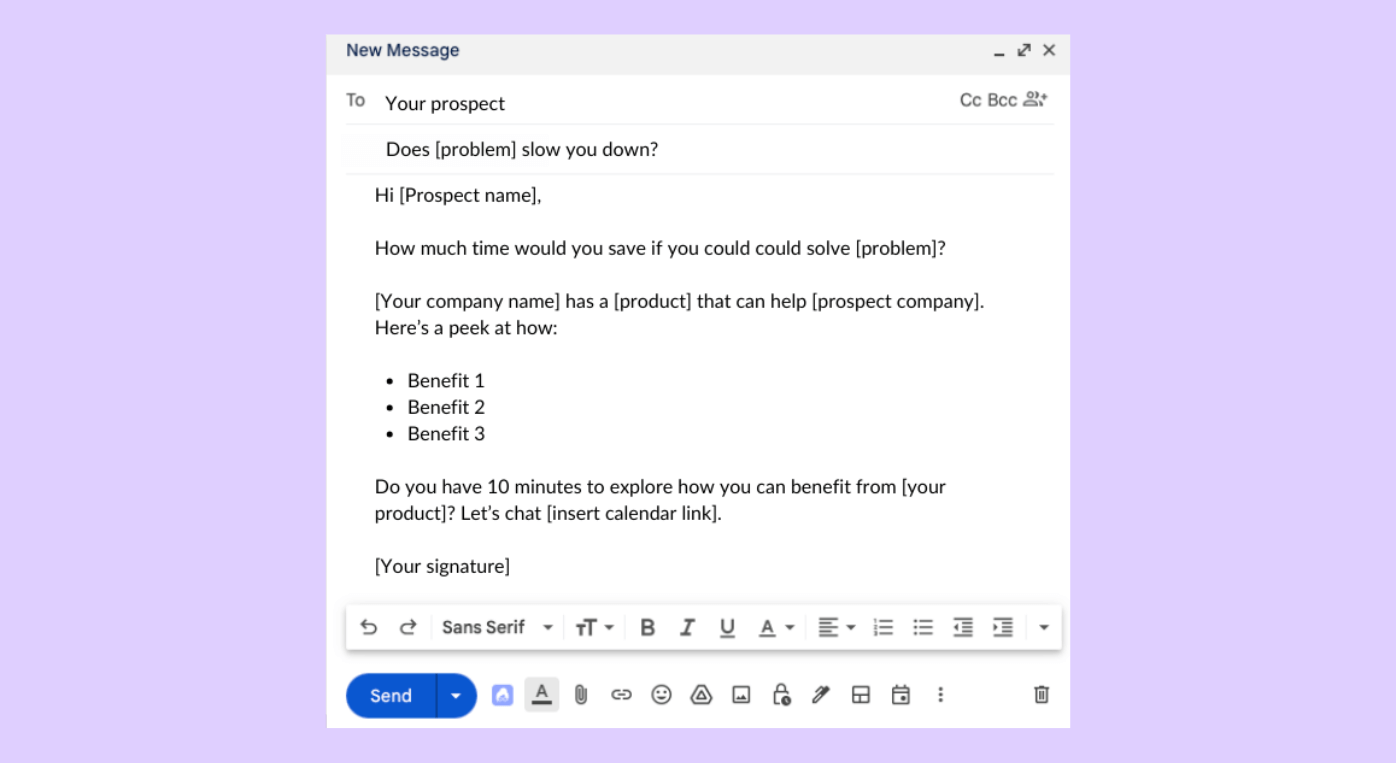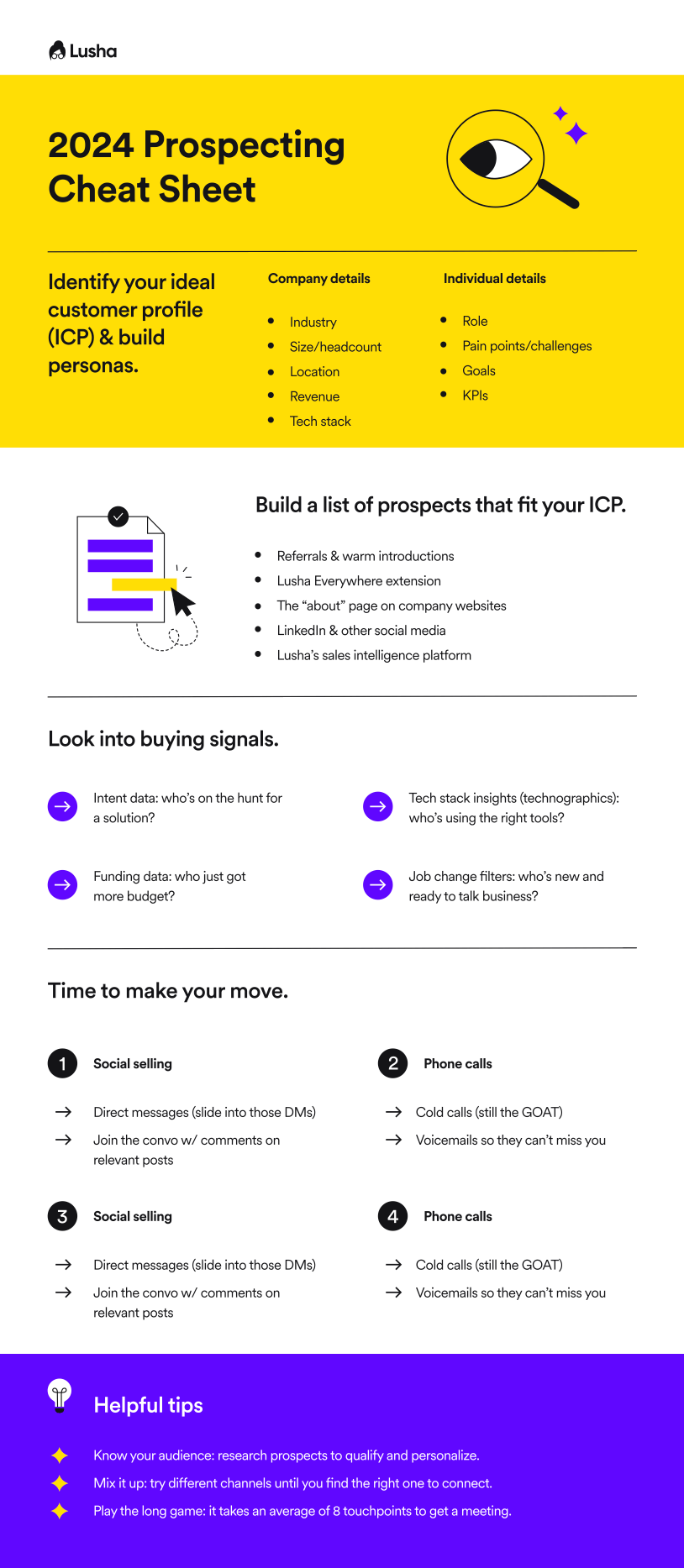Sometimes sales prospecting feels about as difficult as… well, prospecting for gold. It can take a lot of sifting to find the prospects that really shine. Many salespeople consider prospecting the hardest part of the sales process. In fact, 77% of sales professionals admitted that they have a hard time getting the sales cycle started. […]
Sometimes sales prospecting feels about as difficult as… well, prospecting for gold. It can take a lot of sifting to find the prospects that really shine.
Many salespeople consider prospecting the hardest part of the sales process. In fact, 77% of sales professionals admitted that they have a hard time getting the sales cycle started. And that’s a problem, because everything hinges on that initial effort. If you don’t do all that great of a job prospecting sales, then you’re not likely to hit your sales targets. No pressure, right?
If it’s such a big deal, then you should probably get a good handle on it. But what exactly is prospecting? Why is it so important, and what techniques can you use to make it more successful?
What is sales prospecting?
Prospecting is the word for everything you do to gain potential new customers. This includes finding them, reaching out to them, and trying to turn them from prospects – someone who might not be familiar with what your company offers – into opportunities (and then, hopefully, into customers).
And by the way, let’s clarify: prospects and leads are not the same thing. Leads are people at the top of the funnel who might be interested in what you’re selling, but they haven’t been qualified. Prospects are contacts who have been qualified and are considered a good fit for your business.
Why is sales prospecting so important?
There are a few reasons why prospecting is important.
We’ll let the numbers do the talking here. Sales people who prospect generate almost 3 times more sales meetings than those who don’t prospect at all. That’s three times more opportunities to win customers and generate revenue.
And while prospecting sales can sometimes make it feel like you’re a nuisance, it’s worth it. Even though buyers have started to take much more of the journey into their own hands and prefer to do their own research, they’re still open to being sold to. A whopping 91% of prospects say they’d be willing to have a conversation with a salesperson early on in their buying journey. Some of them are even more than willing – 71% want to hear from a salesperson early on in the process.
Plus, prospecting pays off. 50% of buyers end up choosing the vendor who reaches out to them first. So go ahead and reach out — it will help you win customers
Even when your prospecting efforts don’t turn into sales, they aren’t a waste. Consider it market research. Your conversations with prospects, even those who fizzle out, can tell you why people buy your product, what their goals are, and how they feel about your selling style. This can help you better understand your best sales approach.
Examples of sales prospecting
What are examples of some ways that sales reps can do the actual reaching out part of the prospecting process? There are basically as many ways to prospect as there are ways to get in touch with anyone else. These are some of the major ones.
Phone prospecting
The classic sales prospecting technique is the good ol’ cold call. And you know what? It still works. Despite countless articles over the years claiming “cold calling is dead,” it’s still one of the most effective examples of prospecting. According to buyers, 70% of their connections with salespeople happen over the phone.
By dialing direct phone numbers (like the ones you can find in Lusha’s database), you get a chance to have a human-to-human connection with your prospects and have meaningful conversations.
Email Prospecting
A well-crafted prospecting email is a powerful tool – 43% of salespeople say it’s their most effective channel for selling. The best prospecting emails focus on value (not features) and have a clear call to action at the end.
Once you’ve landed on a good template (like the one below), you can prospect efficiently with email.

Social media prospecting
To prospect effectively, you want to spend your time where your prospects are having conversations. And if you want to be where the people are, then you want to be on social media.
LinkedIn sales prospecting could involve:
- Creating high-quality, authority-building content
- Connecting with potential prospects
- Sending InMail to prospects
- Liking and commenting on prospects’ posts
- Engaging in comment threads where your prospects hang out
As a bonus, using a tool like Lusha Extension you can save your prospect’s contact details right from LinkedIn. That way, you can follow up with them later via phone or email too.
How to find new sales prospects
It’s hard to go out and woo prospects without, well, having prospects. Half the battle is actually finding them so you can reach out. Building out a list is essential to the prospecting sales process. So how do you go and find your new best customers?
Here are five prospecting strategies you can uncover new prospects to add to your prospecting list.
LinkedIn prospecting
LinkedIn is one of the main platforms used for prospecting, and with good reason. It boasts over 900 million members and over 58 million companies – basically a treasure trove for prospecting. LinkedIn is where your B2B prospects hang out, so it makes sense to find them there.
Even if you don’t perform any of your outreach on LinkedIn, it’s still a useful place to find prospects (and a useful way to perform some prospect research at the same time). LinkedIn helps you take advantage of this with their platform-specific prospecting tool, LinkedIn Navigator. For even more prospecting power, there are other tools like extensions that can be used over LinkedIn to help you get that all-important prospect contact information (psst – Lusha has an extension that does this).
Prospecting Tools
Sales prospecting tools like Lusha’s sales intelligence platform take prospecting to a new level by giving salespeople the opportunity to tap into huge databases of profiles with direct contact information and other key details like company data. Advanced filters help narrow down by ideal customer profile so you can find the most relevant prospects.
Join the conversation
Join groups online (or attend in-person networking events) where your prospects are active. If you want to be part of the conversation, you need to place yourself where those conversations are happening. You can find the relevant groups by looking at prospects’ profiles or using an audience insight tool that shows sites your prospects frequent.
Inbound marketing
One of the top methods for prospecting is inbound marketing. Inbound prospecting is popular because when you do it correctly with good content and solid offers, inbound can provide constant outcomes. Work with the marketing team to put a well constructed prospecting marketing plan in place.
Ask for referrals
Take advantage of the powerful network you already have by coming up with a regular strategy of asking for referrals. 84% of business decision makers report that their buying process starts with a referral. Leverage the clients you have to help you gain new ones.
5 Proven sales prospecting methods and tips
Prospecting already takes up a lot of time. According to some reports, as much as 50% of sales time is wasted on unproductive prospecting.
You’re going to spend a lot of time prospecting – that’s just a part of the whole sales gig. So how can you make sure that you’re using that time productively?
There’s a lot of advice out there on the best ways to prospect, but we distilled it down to some of the most relevant. Here are best practices and techniques for successful sales prospecting.
1. Create a prospect list
All prospecting starts somewhere, and usually it starts with a list. A prospect list is a list of potential clients that match your ideal customer profile. To create this list, you need to first understand your buyer persona(s) and be very clear about how the product you’re selling can provide the best solution to every buyer persona you’re targeting.
Once you finalize your prospect list, it will serve as your directory to help you identify the potential clients to contact.
2. Research, research, research
Part of prospecting wisely is making sure that you’re going after the right prospects in the first place. That’s why it’s so important to qualify your prospects.
The first step of researching your prospects should be making sure that they’re a good fit. What’s valuable to their business, and is it something you offer? Are they showing signals that they are ready to buy something similar to what you sell? Leveraging data insights for prospecting will help you seal the deal.
Once you’ve qualified your prospects, research also helps you make the sale. When you learn about their problems, wants, and needs, you can connect more easily on that sales call. It means you know what to say to break the ice, can anticipate pain points, and can tailor your message to explain what you offer in a way that means the most to them.
You can gain some of this valuable research by going on social media profiles and company websites as well as using a sales intelligence tool like Lusha.
3. Embrace social selling
82% of buyers look up a salesperson on LinkedIn before even replying to their outreach. That means your social media presence is almost as important as your first contact point. Make sure that your profile is optimized, and establish yourself as a thought leader in your space. If you master social selling as part of your prospecting process, you’ll get 45% more sales and be 51% more likely to reach quota.
4. Find the right channel for each prospect
Different people prefer different channels – some like to discuss things over the phone, some are more comfortable with email prospecting, and others prefer social media. How would you know? It’s simple really – try something. If you’ve tried the phone and they didn’t pick it up after a few attempts, connect with them on LinkedIn. Or send them an email – 80% of buyers prefer to be contacted via email. You could even spice up the standard email by using some video prospecting techniques. If you’re having trouble finding your prospect’s email, there are tools that allow you to find anyone’s email by name.
Most importantly: keep trying until you find the right channel. It might take some trial and error.
5. Don’t give up too soon
It’s easy to feel dejected and move on to the next when a prospecting conversation doesn’t pan out. But successfully prospecting takes persistence. 80% of sales happen after at least five follow up calls. Even an initial meeting takes time – it takes an average of eight touch points before prospects agree to a sales meeting. And yet, 44% of salespeople give up after just one follow-up call. The key here is: if at first you don’t succeed, try again.
So, are you ready to dive into you prospecting now that you’ve read all this awesome advice? Try out Lusha to help you build your prospecting lists, identify buying signals, enrich data, and more.


